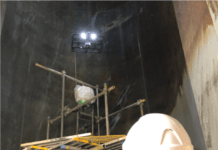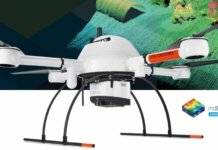The New York Power Authority (NYPA) has received funding to research and integrate LiDAR technology into its existing unmanned aircraft system (UAS) program for vegetation management inspections along its transmission lines.
NYPA was awarded a $125,000 grant from the American Public Power Association’s Demonstration of Energy & Efficiency Development program. NYPA owns and operates approximately one‑third of New York’s high‑voltage power lines, which transmit power from NYPA’s three large hydroelectric generation facilities and independent wind power generation facilities, connecting nearly 7,000 MW of renewable energy to New York State’s power grid.
In February, NYPA will begin a yearlong pilot project to determine the optimal combination of drone and LiDAR technology for use in utility industry inspections. NYPA’s research and development team will evaluate combinations of drone and LiDAR technology, aimed at keeping the total weight of a drone with LiDAR equipment under 55 pounds in order to comply with the Federal Aviation Administration’s Part 107 regulations for the operation of small UAS.
Currently, NYPA’s vegetation management program relies on contracting specialized companies with LiDAR‑equipped manned aircraft, and the inspection cycle for the entire transmission system is repeated every four years. NYPA expects the drone operations to reduce the inspection cycle through improved responsiveness and shorter inspection times and greatly reduce hazards by eliminating the need to place contractors or employees near energized equipment.
“The application of drones equipped with LiDAR technology will enable utilities like ours to conduct inspections with increased safety and improved efficiency,” says Gil C. Quiniones, NYPA’s president and CEO. “This project not only moves the industry forward but also plays a critical role in NYPA’s progress toward becoming the nation’s first end‑to‑end digital utility by digitizing inspection operations and collecting data with enhanced precision.”










